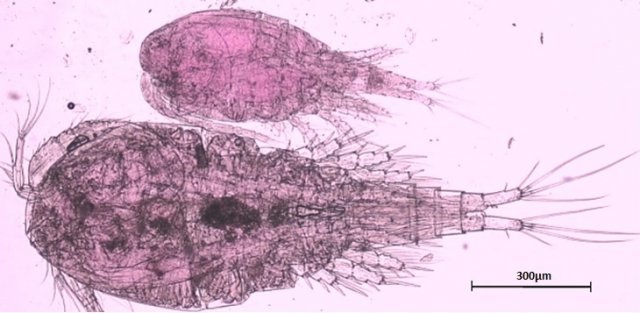Thermocyclops Crassus in the Great Lakes
EPA confirms non-native invertebrate species in the Great Lakes
(Nov. 1, 2016) U.S. Environmental Protection Agency’s Great Lakes National Program Office has confirmed the presence of a non-native invertebrate zooplankton species in the western basin of Lake Erie.
This new finding is a result of a collaboration between EPA and Cornell University researchers as part of EPA’s long-term biology monitoring program in the open waters of the Great Lakes. Cornell researchers identified the presence of a new zooplankton species, Thermocyclops crassus, in samples collected from 2014 through 2016.
According to the U.S. Fish and Wildlife Service, the ecosystem risk from Thermocyclops crassus is uncertain because there is no history or projection of harm from this species in the Great Lakes. EPA will continue to work with researchers and agency partners to determine the extent of the population and further assess potential risk.
Thermocyclops crassus is present throughout Eastern Europe, Asia, Africa and Australia where it lives in warm waters that are rich in nutrients. It is similar to other zooplankton species in the Great Lakes. In 1991, it was detected in Lake Champlain but remains rare. To date, there is no evidence of adverse impact on the Lake Champlain ecosystem. A study of transoceanic ships entering the Great Lakes in 2001 through 2002 -- before the current standards on flushing ballast water went into effect -- found one Thermocyclops crassus in the sediment of a ballast water tank on one ship. The species’ detection in Lake Erie was not part of that study.
Related Information
EPA Contacts
Elizabeth Hinchey Malloy
([email protected])
312-886-3451
James Schardt
([email protected])
312-353-5085

